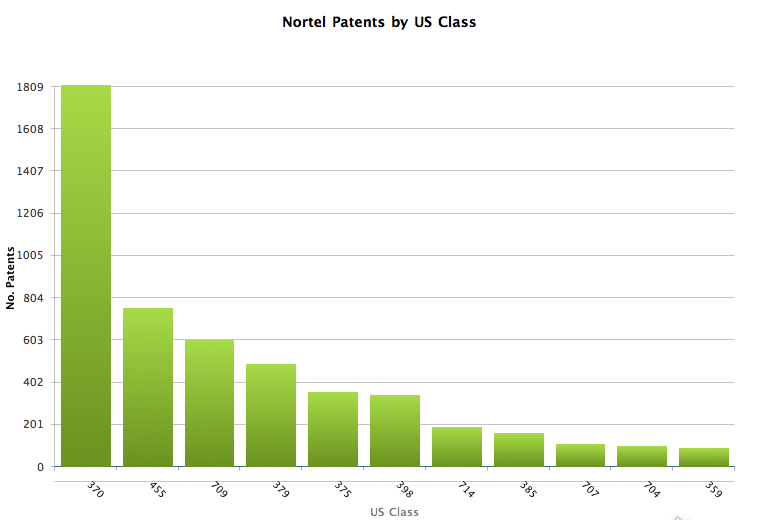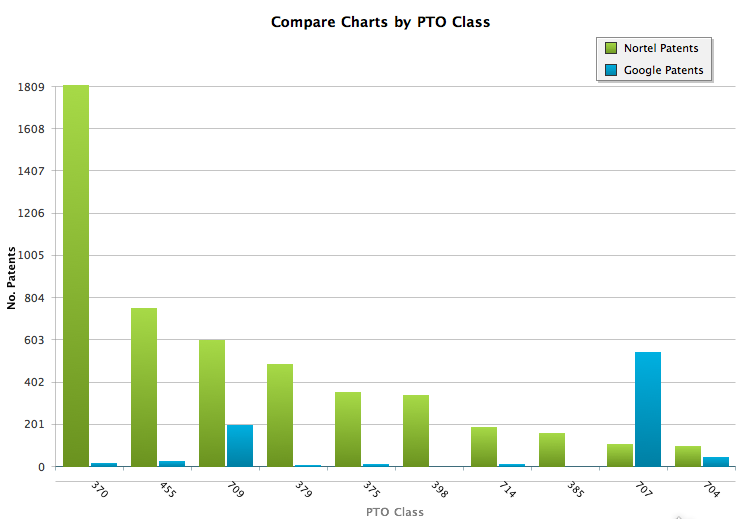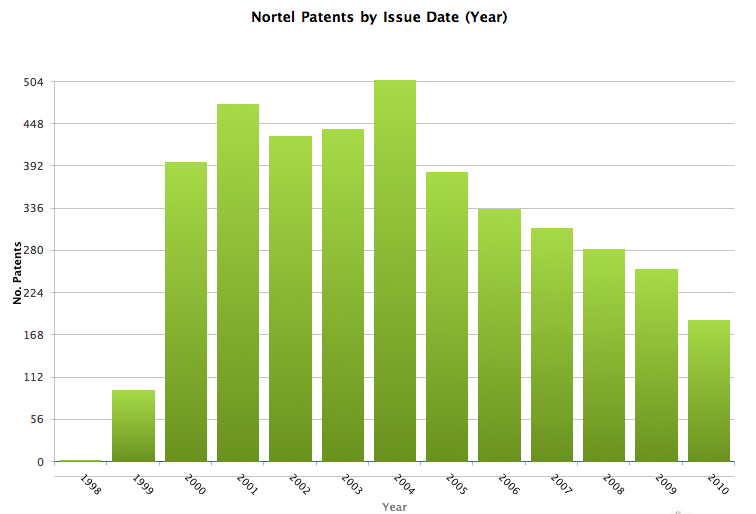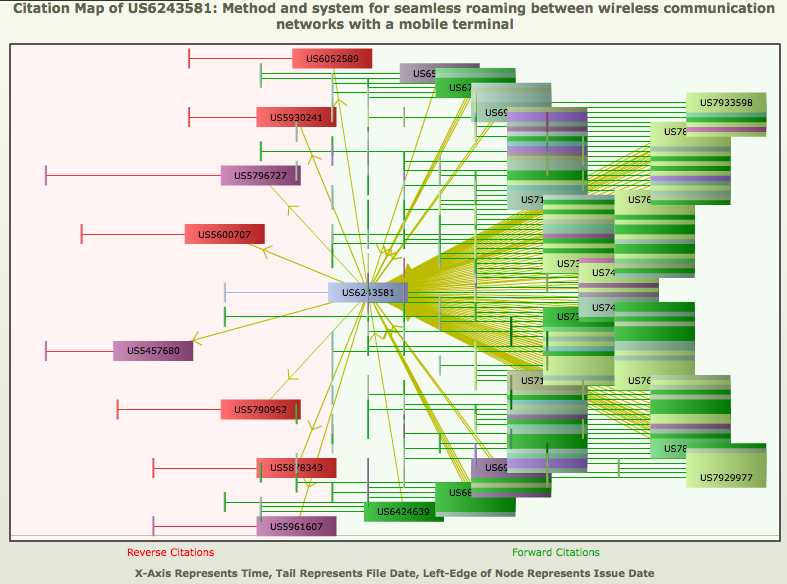The Patent Auction
On Monday, June 27th, 2011, the highly anticipated auction for Nortel’s patent portfolio will begin. Google has kicked things off with their “Stalking Horse” bid of $900 million. The proceedings could take a few days, with a winner emerging with an extensive portfolio covering thousands of patents in telecommunications, social networking, and search. Many of the patents pertain to technologies in the highly competitive and litigious smartphone and tablet markets. On July 11th, an approval hearing will be held, which should confirm the winner of the auction.
Google will face competition from Apple, Intel, Ericsson AB, as well as defensive patent aggregator RPX. As the “Stalking Horse” bidder, Google has signified a serious intent to stake a claim on the mobile marketplace of technology and innovation. They made the case for this on their official blog on April 4, 2011, stating:
“We hope this portfolio will not only create a disincentive for others to sue Google, but also help us, our partners and the open source community—which is integrally involved in projects like Android and Chrome—continue to innovate.”
It is likely that Google’s rationale for acquiring Nortel’s patents is similar to that of all the key players in this auction, but Google carries a much lighter portfolio of related patents than some of the other bidders such as Apple, Intel, et al. – or even others who could yet enter the fray, notably Research In Motion and Microsoft. This isn’t about acquiring a new transformative technology and bringing it to the market – this is about defensive positioning and ensuring freedom to operate in the highly competitive and treacherous mobile marketplace.
Research In Motion certainly knows first hand the risks of IP exposure, and Apple and Nokia recently buried the hatchet on gigantically expensive suits and counter-suits relating to patent infringement and licensing fees. The Nortel patent portfolio can be a sort of insurance policy for a purely defensive buyer – or it could be seen as a weapon to extract licensing fees or bring suits. It will be interesting to see how the auction plays out and how the winning bidder positions itself post-acquisition, to say the least.
The Portfolio
We examined the portfolio at a quick glance and did some brief analysis to get a feel for this group of patents (looking at US patents and apps only).

Shown here are the top 10 classes (primary) of Nortel’s patent portfolio. Not surprisingly, these cover telecommunications, multiplex communications, data transferring, and other related technologies. If you compare this same profile (Nortel patent class counts) with Google, an interesting picture emerges

Obviously, this doesn’t account for all variables, but it does give substantial insight into potentially how important and complementary the Nortel portfolio can be to Google. And perhaps more importantly, it speaks to the amount of defensive power it could hold in IP terms. Google certainly has made a big strategic focus in the mobile market (devices, search, advertising) over the past couple of years and that is likely to only strengthen – acquiring Nortel’s patents would enhance their positioning to do so.
In looking at the timeline for these patents (including calculating their term), one gets a picture that depicts a relatively robust portfolio with almost all in force for years to come--

Other Analysis
In assessing the Nortel patent portfolio, we looked at some of the most technologically “foundational” patents, as identified through citation analysis. In general the portfolio shows a lot of strength, with the top 10 patents showing well over 1,800 citations and the portfolio contains almost 200 patents with at least 50 citations and well over 2,000 patents with at least 5 citations.
Looking a bit further into this small slice, we find that the likely suspects for the auction provide another interesting micro-view into the citation map for these “seminal” Nortel patents (top 10 most cited). The following table shows the number of forward citations for the Nortel patents by selected assignees:
| Nortel Patent | Apple | Intel | Ericsson AB | Microsoft | RIM | Nokia | |
|---|---|---|---|---|---|---|---|
| US6092196 | 1 | 2 | 17 | 1 | |||
| US5991292 | 4 | 2 | |||||
| US6286038 | 10 | 1 | 11 | 1 | |||
| US6337858 | 9 | 2 | |||||
| US6243581 | 1 | 5 | 6 | 2 | 17 | ||
| US6597689 | 2 | 2 | 3 | ||||
| US5982748 | 3 | 3 | |||||
| US6333973 | 3 | 2 | 14 | 6 | |||
| US6026375 | 1 | 1 | 11 | ||||
| US6115646 | 4 | 61 |
While this is obviously a woefully inadequate sample for analyzing the entire portfolio, there are already some interesting patterns emerging, including the relative paucity of patents of Google and Apple that cite this important Nortel IP. One might also infer that Microsoft and Nokia probably have substantial intellectual property interests in technologies building off of or relating to the Nortel portfolio (or specific patents).
Isolating US6243581: Method and system for seamless roaming between wireless communication networks with a mobile terminal, cited by 169 other US patents, only Google and Apple do not currently have patents citing this Nortel patent from the above cohort. By looking at the citation map for this patent we can get more insights into the technologies leading up to it and also who is advancing the state of the technology in building off of it (and how).

There are a lot of other potential ways to expand this analysis, both in terms of pursuing different and deeper views into the data, as well as expanding the sample into the full portfolio, but this brief foray allowed us to get a feel for the landscape and an appetite for further inquiry.
Conclusions
The pre-auction process has given the potential bidders quite an expansive and perhaps uniquely unprecedented task of understanding and valuing a massive portfolio of patents in a field entangled by seemingly daily news of suit, counter-suit, and general IP paranoia. The “stalking horse” bid of $900 million by Google serves as the “reserve bid” of sorts – a bid that is acceptable to the seller (or creditors) and moves the auction into completion even if no further acceptable bids are presented.
It will certainly be a fascinating few days and few years post auction as the new owner of this important portfolio finds ways to extract their own value from it – certainly the IP transactional landscape will never be the same after this >$1 billion deal is consummated.
It‘s likely that each bidder values this portfolio differently and the strong cash positions of Google and Apple combined with their current much smaller relative IP footprints to the other mobile telecoms (and Microsoft and Intel) will make them formidable players in the auction this week. IP (and mobile telecomm) professionals: get your popcorn ready….
---
Erik Reeves
erik.reeves@sumobrain.com

